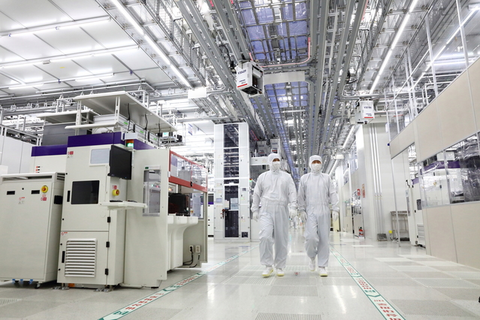Fusion Power Nears Commercialization: U.S., China Enter Full-Scale Race for Leadership in ‘Energy of the Sun’
Input
Modified
Germany’s Proxima Fusion Secures €130 Million in Funding Global Firms Compete for Commercialization by Early 2030s Safer and More Eco-Friendly Than Coal and Nuclear Power

As global startups developing next-generation energy technologies continue to secure large-scale investments, the commercialization of fusion power is increasingly within reach. Most recently, Germany’s Proxima Fusion secured the largest-ever Series A funding round among European fusion startups, signaling growing investor confidence in the sector. In parallel, the UK government has committed USD 3.4 billion to a cutting-edge fusion power plant project, officially launching its drive toward commercialization.
Meanwhile, the United States and China are accelerating their efforts to complete the world’s first operational fusion power plants by 2027, pushing forward with rapid advancements in technology and infrastructure. As a result, the global race for leadership in the future of energy is heating up, with fusion power emerging as the ultimate prize.
U.S.-Based CFS Secures USD 1.8 Billion, Emerges as Industry Leader
According to the European energy sector on the 17th (local time), Germany’s Proxima Fusion has raised approximately USD 150 million in a Series A round from global venture capital firms including Cherry Ventures, Valderton Capital, UVC Partners, and DTCF. This marks the largest investment round to date for a fusion startup in Europe.
Proxima Fusion was spun off from Germany’s Max Planck Institute for Plasma Physics in 2023 and is working toward the commercialization of nuclear fusion, with the goal of building a power plant by 2031.
Global investors reportedly viewed the company’s ability to technically realize sustainable, clean energy as a key strength. In particular, Proxima Fusion is designing a Stellarator-based fusion power plant, which uses powerful external magnetic fields to contain plasma and maintain a stable fusion state. This structurally stable method of plasma control has drawn positive attention for enhancing the feasibility of commercial fusion. The company’s concrete timeline for commercialization by 2031 also helped ease investor concerns over the risk of delayed returns.
Beyond Proxima Fusion, several other fusion startups have also secured significant funding and are accelerating their technology development.
Commonwealth Fusion Systems (CFS), based in the U.S., raised USD 1.8 billion in 2021, positioning itself as a frontrunner in the sector. Working in collaboration with MIT, CFS is pushing to build a fusion power plant with commercialization targeted for the early 2030s.
General Fusion, known for its Magnetized Target Fusion (MTF) approach, has secured USD 405.3 million in funding and aims to operate a demonstration plant by 2026 to reach break-even energy production.
Helion Energy has set the most aggressive target, planning to begin generating fusion power by 2028 and supply electricity to Microsoft, making it a standout in the race toward real-world deployment.

The Key to Fusion Power: Controlling Ultra-High-Temperature Plasma
As more global fusion energy projects move toward commercialization, expectations for fusion technology continue to grow. Fusion—the same process that powers the sun—releases tremendous amounts of energy by fusing two light atomic nuclei into a heavier one. This reaction is considered significantly cleaner and safer than both fossil fuels and conventional nuclear fission. Unlike fission, fusion produces virtually no long-lived radioactive waste, and its primary fuels—deuterium and tritium—can be relatively easily extracted from seawater, reducing concerns about resource depletion.
For decades, fusion has been referred to as the “energy of the future,” believed to be decades away from real-world application. However, recent breakthroughs in high-temperature superconducting magnets, precision plasma simulations, and AI-based control systems have brought the commercialization of fusion power plants much closer to reality. The core challenge in fusion power lies in maintaining plasma at temperatures of hundreds of millions of degrees Celsius in a stable state while enabling atomic nuclei to fuse—technologically one of the most demanding tasks ever attempted. As a result, global institutions and companies are engaged in an intense race to develop the most efficient and stable control methods.
Despite this progress, experts point out that technical and economic hurdles remain. Sustaining ultra-high-temperature plasma over long durations is not yet fully resolved. For full commercialization, reactors must achieve at least 300 seconds of continuous operation, a benchmark that current systems have yet to meet. In addition, the high costs of building and maintaining fusion reactors, as well as safety concerns such as potential tritium leakage, continue to fuel debate over the economic viability and safety of fusion power.
South Korea Leads with Magnetic Control Technology Amid Global Race
Despite ongoing challenges, major countries are accelerating efforts to lead the future of fusion energy. The United States and China are locked in a high-stakes competition to complete the world’s first operational fusion power plants by 2027. In the U.S., startups are leading the charge—Commonwealth Fusion Systems (CFS) is developing its compact SPARC reactor, considered one of the closest to commercialization. China, backed by large-scale state funding, is constructing a new superconducting tokamak fusion reactor named BEST (Burning Plasma Experimental Superconducting Tokamak).
Europe is also ramping up public investment. On June 12, the UK government announced approximately USD 3.2 billion investment in STEP (Spherical Tokamak for Energy Production)—the world’s first proposed commercial fusion power plant. Scheduled for completion by 2040, STEP aims to produce a net output of at least 100 megawatts and is being developed on the site of the decommissioned West Burton A coal plant in Nottinghamshire, transforming the region into a clean energy hub.
France is home to the world’s largest international fusion research project, ITER, located in Cadarache, Provence-Alpes-Côte d'Azur. A multinational megaproject jointly funded by the U.S., China, Japan, South Korea, the EU, and others, ITER is targeting first plasma operation by 2025. Its central goal is to demonstrate net energy gain from fusion reactions, proving that a fusion reactor can generate more energy than it consumes.
Japan, meanwhile, is focusing on long-duration plasma operation and high-performance fusion through its JT-60SA superconducting tokamak in Naka, Ibaraki Prefecture. The country has achieved global recognition in core areas such as plasma control and magnetic field stabilization, and plays a central role in ITER’s development through advanced simulations and plasma control algorithm research. Alongside international collaboration, Japan is also pursuing independent research and demonstration projects to support its long-term vision for fusion-based energy security.
Although South Korea entered the fusion race later than some of its peers, it is now regarded as a serious contender. Korean fusion researchers have earned a strong international reputation, especially in the stable control of high-temperature, high-density plasma, so much so that over half of the current experimental proposals at KSTAR involve collaboration with international research teams.
South Korea’s KSTAR (Korea Superconducting Tokamak Advanced Research) facility, completed in 2007 with domestic technology, incorporates world-leading magnetic field precision control. Operated by the Korea Institute of Fusion Energy (KFE), KSTAR aims to achieve key milestones such as sustaining plasma at 100 million degrees for 300 seconds, which is essential for future reactor operation. Through this, South Korea seeks to secure core technologies for fusion reactor construction and strengthen its leadership in next-generation energy.





















